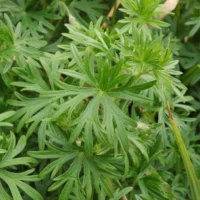Leaf type: Kidney shaped, cordate, lobed
Phyllotaxis: Opposite (stem leaves), whorled (basal leaves)
Leaf (upper side)



Habitus & biology
Geranium rotundifolium is an annual plant with upright or ascending shoots. These can grow up to 30 centimetres long.
The basal leaves are roundish to kidney-shaped and only slightly incised. The opposite stem leaves are lobed and deeply incised.
Leaves and stems are finely hairy. The stems can turn reddish in colour.


Distribution & habitates
The original distribution area is in Europe, North Africa and West Asia. Geranium rotundifolium is also found as an introduced species in some North American and South American regions (source).
The round-leaved cranesbill grows along roadsides, on railway embankments, in weedy areas and in front of walls.


Botany
The round-leaved crane’s-bill (Geranium rotundifolium) belongs to the Geraniaceae family and is also known as roundleaf geranium.


 Geranium sanguineum (bloody cranesbill)
Geranium sanguineum (bloody cranesbill)  Geranium macrorrhizum (bigroot geranium)
Geranium macrorrhizum (bigroot geranium)  Geranium endressii
Geranium endressii  Geranium pratense (meadow cranesbill)
Geranium pratense (meadow cranesbill)  Geranium sylvaticum
Geranium sylvaticum